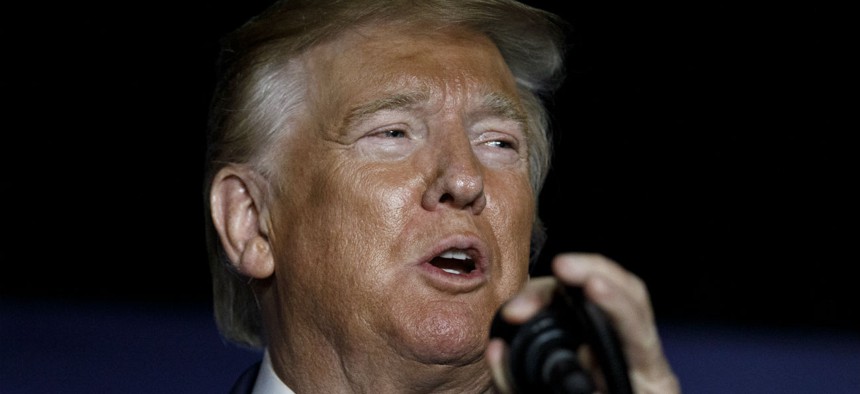
Carolyn Kaster/AP
Details on the President’s Proposed 2020 Pay Raise, and More
A weekly roundup of pay and benefits news.
Last week, the Trump administration unveiled more details regarding the president’s proposal to issue a 2.6% across-the-board pay raise to federal civilian employees in 2020.
Trump first announced the pay raise last month as part of his alternative pay plan, legally required to prevent much larger automatic increases from taking effect under the 1990 Federal Employees Pay Comparability Act. The move to provide a 2.6% boost in base pay next year, with no adjustment to locality pay, marked a reversal from the administration’s push earlier this year to institute a pay freeze in 2020.
On Sept. 5, acting Office of Personnel Management Director Margaret Weichert issued guidance to agency chief human capital officers confirming that, absent Congress passing a different raise before the end of the year, the same 2.6% across-the-board increase would apply to federal officials paid under special rates.
“Historically, the default January adjustment for special rates has been equal to the January across-the-board adjustment for [General Schedule] base rates,” Weichert wrote. “I have determined that the default January 2020 adjustment for special rates will be equal to the January 2020 across-the-board adjustment for GS base rates, which the president has determined will be 2.6%.”
Agencies seeking a larger or smaller raise for special rates employees have until Oct. 25 to send such requests to OPM.
Meanwhile, the agency that administers the federal government’s 401(k)-style retirement savings program is on the cusp of implementing a variety of changes to make it easier for federal employees and retirees to manage their retirement accounts.
On Sept. 15, the Thrift Savings Plan will officially implement the provisions of the 2017 TSP Modernization Act. The changes will allow, among other things, participants to make multiple post-separation partial withdrawals and up to four in-service withdrawals annually for those 59 and a half and older. Those receiving payments will be able to adjust the amount and frequency of those payments any time, rather than once per year.
But one proposal is not among the changes. According to a final regulation posted to the Federal Register last week, the Federal Retirement Thrift Investment Board will not allow participants to make Roth conversions, a practice by which a 401(k) participant shifts their investments to a Roth account. Such accounts are taxed up front but allow participants to receive tax-free payments once they reach retirement age.
“Six individuals requested the ability to convert a traditional balance to a Roth balance within the TSP,” the agency wrote. “The FRTIB has, in the past, considered allowing in-plan Roth conversions and ultimately concluded that the tax complexities involved and, in particular, the potential irreversible financial pitfalls for participants, weighed against doing so. Revisiting the decision was outside the scope of implementing the changes permitted by the act.”







